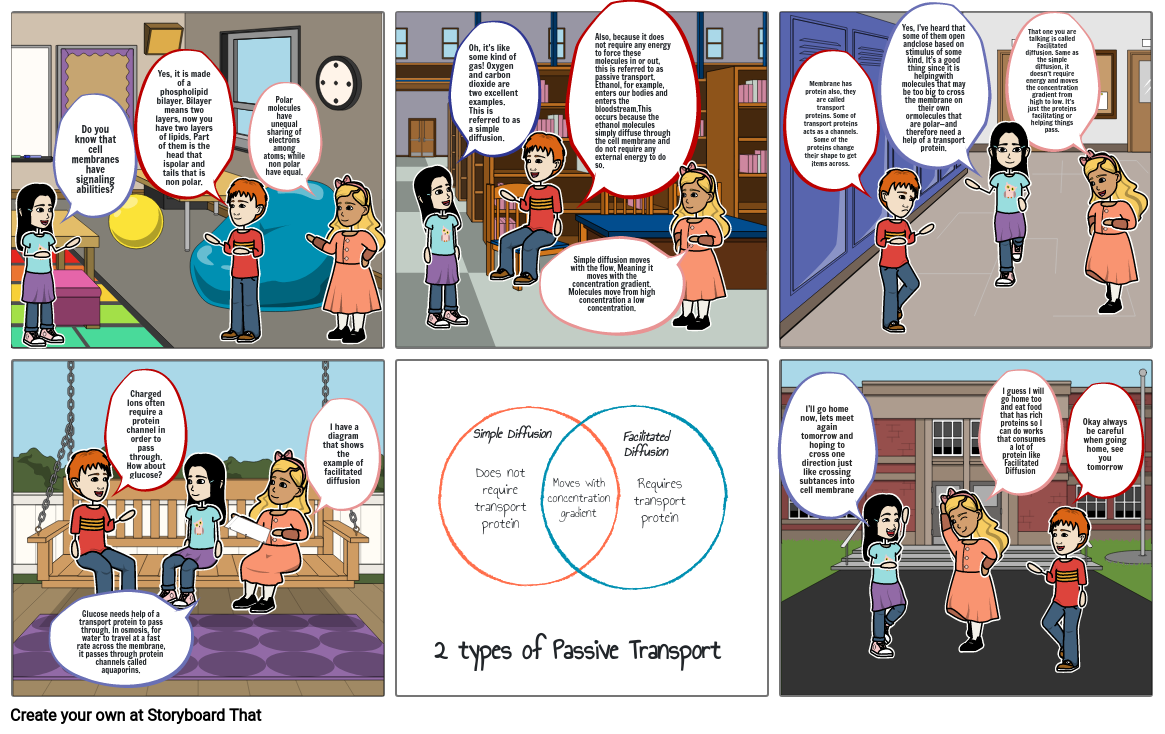Passive transport

Texte du Storyboard
- Do you know that cell membranes have signaling abilities?
- Yes, it is made of a phospholipid bilayer. Bilayer means two layers, now you have two layers of lipids. Part of them is the head that ispolar and tails that is non polar.
- Polar molecules have unequal sharing of electrons among atoms; while non polar have equal.
- Oh, it's like some kind of gas! Oxygen and carbon dioxide are two excellent examples. This is referred to as a simple diffusion.
- Simple diffusion moves with the flow. Meaning it moves with the concentration gradient. Molecules move from high concentration a low concentration.
- Also, because it does not require any energy to force these molecules in or out, this is referred to as passive transport. Ethanol, for example, enters our bodies and enters the bloodstream.This occurs because the ethanol molecules simply diffuse through the cell membrane and do not require any external energy to do so.
- Membrane has protein also, they are called transport proteins. Some of transport proteins acts as a channels. Some of the proteins change their shape to get items across.
- Yes, I’ve heard that some of them open andclose based on stimulus of some kind. It’s a good thing since it is helpingwith molecules that may be too big to cross the membrane on their own ormolecules that are polar—and therefore need a help of a transport protein.
- That one you are talking is called Facilitated diffusion. Same as the simple diffusion, it doesn’t require energy and moves the concentration gradient from high to low. It’s just the proteins facilitating or helping things pass.
- Glucose needs help of a transport protein to pass through. In osmosis, for water to travel at a fast rate across the membrane, it passes through protein channels called aquaporins.
- Charged Ions often require a protein channel in order to pass through. How about glucose?
- I have a diagram that shows the example of facilitated diffusion
- 2 types of Passive Transport
- Does not require transport protein
- Simple Diffusion
- Moves with concentration gradient
- Facilitated Diffusion
- Requires transport protein
- I'll go home now, lets meet again tomorrow and hoping to cross one direction just like crossing subtances into cell membrane
- I guess I will go home too and eat food that has rich proteins so I can do works that consumes a lot of protein like Facilitated Diffusion
- Okay always be careful when going home, see you tomorrow
Plus de 30 millions de storyboards créés
Aucun Téléchargement, Aucune Carte de Crédit et Aucune Connexion Nécessaire Pour Essayer !

